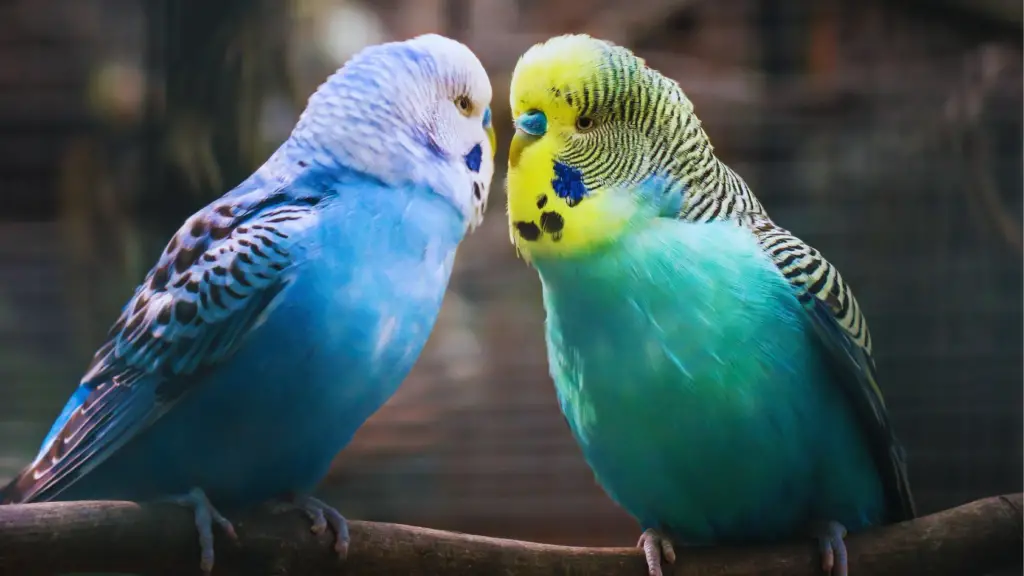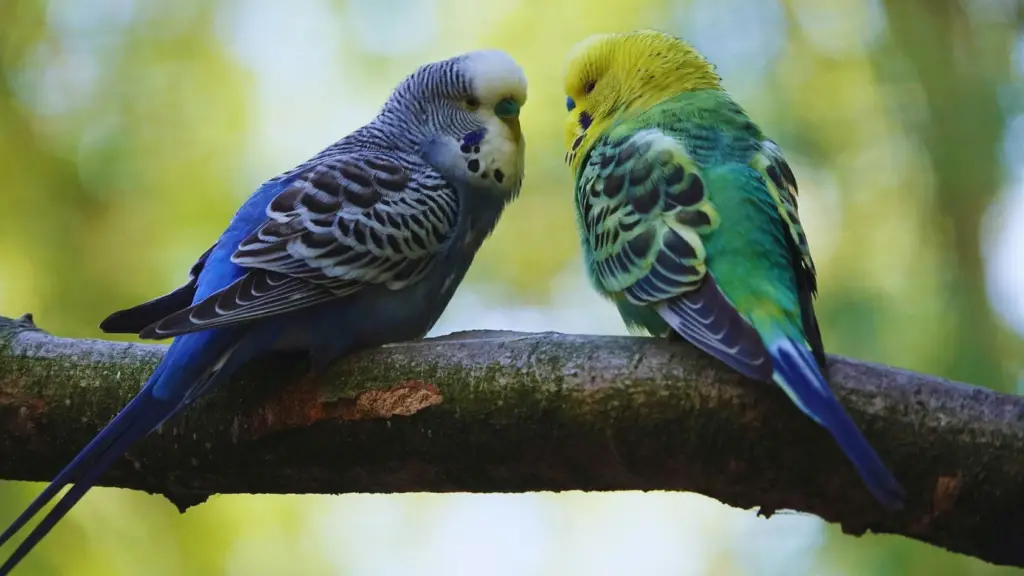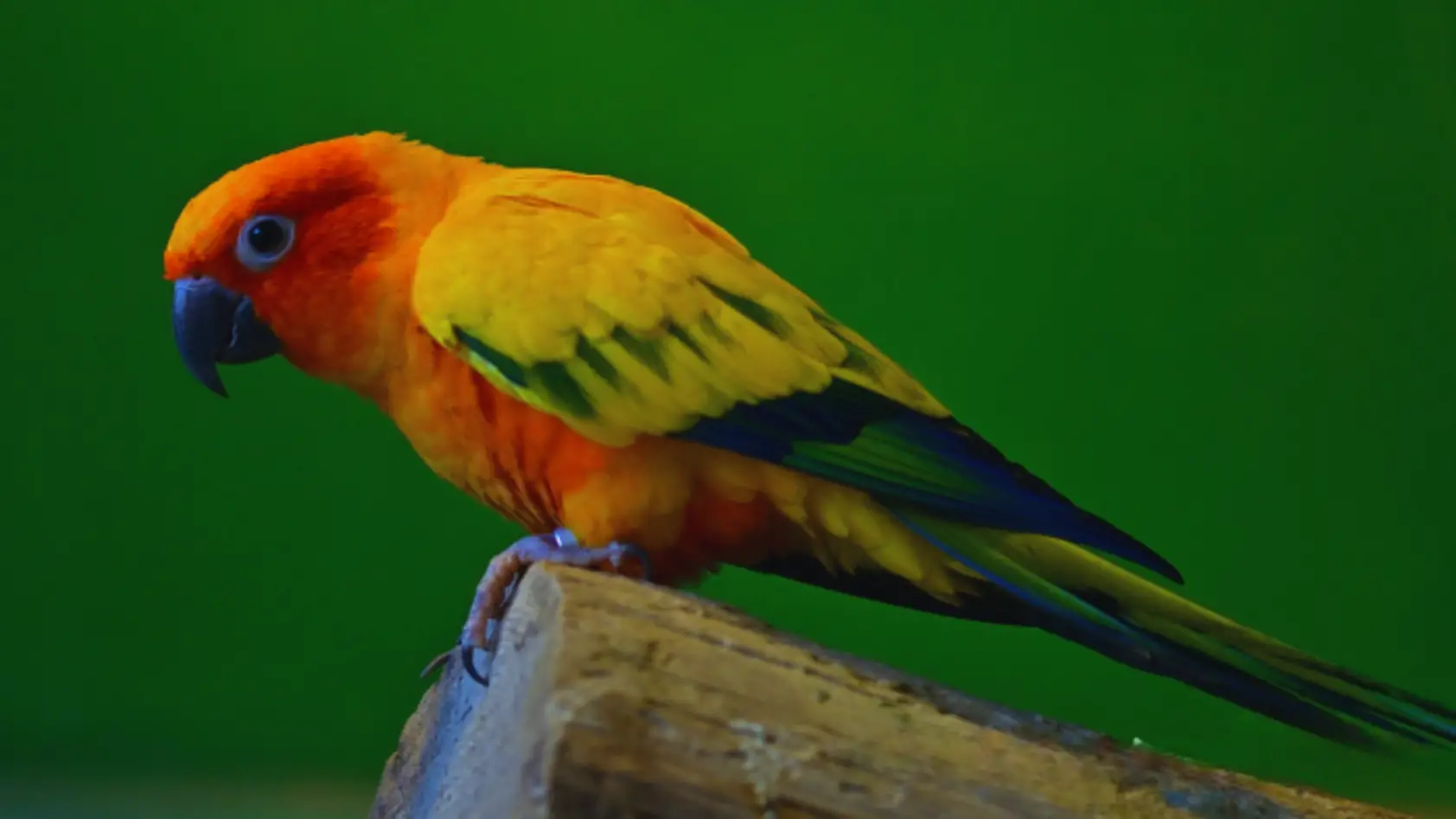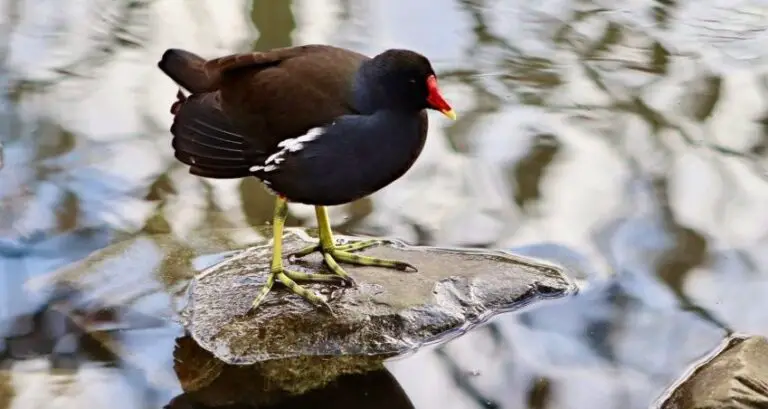Parakeets, also known as budgies, are popular pet birds known for their vibrant colors and sociability. As a potential or new parakeet owner, you might wonder, “How long do parakeets live?” Understanding a parakeet’s lifespan helps you provide the best care for your pet bird, helping it live a long and healthy life.
How Long Does a Budgie Live?
The word “parakeet” is used for a wide variety of parrots with certain traits, like long tail feathers and a diet that is mostly seeds. The budgerigar (Melopsittacus undulatus), which is the most common, is the most popular pet parrot species.
Budgies are small birds from Australia that look like parakeets. Even though they are small, these guys could live to pretty amazing ages.
Most budgies die too soon because they are still often thought of as throwaway pets. They’re cheap to buy, and there are still a lot of myths about how to take care of them. This means that many budgies spend their lives locked in small boxes and eating low-quality seeds.
Because of these things, most budgies die before they turn 5. A real shame, because they could live up to 20 years if they were well cared for and had a little luck. Budgies that have been proven to be nearly 30 years old have been found.
How Long Do Parakeets Live?
Most parakeets live between 5 and 15 years. This number depends on a lot of things, like how well they are cared for in captivity, if they have natural enemies, and how well they breed. People know that many parakeets live longer in the wild than they do in captivity, which doesn’t happen very often with other bird types.
For instance, the normal wild parakeet can live much longer than 10 years and can sometimes live for over 20. Most animals tend to live longer in captivity, but pet shops and pet suppliers often treat parakeets unfairly or breed them in ways that aren’t good for them.
If you want to bring a parakeet into your home, it’s important to find a good parakeet breeder. Many parakeets live longer in the wild because they are not properly looked for or have been bred.
When they are well taken care of, parakeets can live a lot longer than their average lives. In fact, Charlie, a parrot, was the oldest parakeet ever recorded. He lived for 29 years. If you buy a parakeet from a reputable breeder and take good care of it, it’s possible that it will live longer than the average captive bird.
Both pet and wild parakeets live the same number of years. Let’s talk about it now.
The Average Parakeet Life Cycle

On average, a pet parakeet can live anywhere from 7 to 14 years in captivity, with some even reaching 20 years under optimal conditions. Factors affecting a parakeet’s lifespan include diet, exercise, mental stimulation, and regular vet check-ups.
In contrast, wild parakeets tend to have a shorter lifespan. They live on average from 4 to 8 years due to predators, disease, and a lack of consistent food sources.
Want to know what happens to a budgie from the time it is born until it dies? Now let’s find out about these birds.
Hatchlings
Parakeets are different because they lay more than one egg at a time, but only one egg at a time hatches. This means that there are babies of different sizes in a nest, and the mother parakeet instinctively feeds the youngest ones first. This means that a wild bird has a good chance of living.
Hatchlings come into the world naked and without any feelings. They get milk from their mother, and after 7 to 10 days, they can see. About a month after they hatch, baby parakeets will start to get feathers and look more like the birds they are meant to be.
Young Parakeets
When they are 3 to 6 months old, young parakeets can take care of themselves without help from their parents. But parakeet groups tend to stay together, and young parakeets still need their parents until they are a year old to learn how to get along with other birds.
Young parakeets need to meet new people often, especially if they are going to be pets. Most types of birds like to spend a lot of time with their own kind, and parakeets are no different. Having other birds to hang out with is good for their mental health.
Adult Parakeets
Parakeets are adults at one year because they can breed. They should be fully grown and a few inches long, with vivid feathers and patterns.
Even adult parakeets need many social interactions, especially among their own species. This is tough to do with a pet parakeet, which may explain why wild ones survive predators.
Parakeets acquire various behaviors from their parents. Grooming, beak rubbing and kissing, and playing are examples. With or without their own kind, parakeets are social and talkative.
You may be wondering how to care for a pet parrot with or without other parakeets. Discuss how to give your parakeets the best life possible.
Lifespan of Different Parakeet Species
The lifespan of a parakeet can vary depending on the species:
- Common Parakeet (Budgie): Budgies are small birds with an average lifespan of 7-14 years, but some have been known to live up to 20 years.
- Monk Parakeet: These parakeets are expected to live anywhere from 15 to 20 years.
- Rose-ringed Parakeet: This type of parakeet can live up to 30 years in captivity.
Main Factors Affecting Parakeet Life Expectancy

A variety of factors can impact how long a parakeet lives, including:
- Diet: A balanced diet contributes to a long and healthy life for parakeets. They need a variety of fresh fruits, vegetables, and grains, along with a high-quality pellet or seed mix. Most of the time, wild parakeets only eat seeds. But their domestic cousins can’t eat seeds because they are too fattening.
- Exercise: Parakeets are very active and need daily exercise outside their cage for optimum health. Getting out of the cage for several hours a day is important for more than just keeping animals from getting fat. It also gives the bird a chance to talk to its owner and keeps things interesting, so the bird doesn’t get stressed out from being bored.
- Mental Stimulation: Parakeets are extremely social and intelligent. Toys, interaction, and training can keep their minds sharp, contributing to their overall well-being. Parakeets are gregarious and live in flocks, but many people forget this. They truly love socializing with their owner and other parakeets. They’ll die without care.
- Veterinary Care: Regular check-ups can help detect and treat potential health issues early, extending the lifespan of your parakeet. Some parakeet owners believe it’s not ‘worth it’ to take their sick bird to the vet because buying a new one is cheaper. Have an avian vet’s phone number available and get a checkup annually.
Increasing Your Parakeet Lifespan
With proper parakeet care, these birds can live longer than their wild counterparts. Here are a few ways to ensure your parakeet lives a long and happy life:
- Provide a Spacious Cage: The cage should be large enough for your parakeet to fly and move around comfortably. Even the smallest budgie needs a lot of room to fly around. The only time this isn’t true is when the budgie is only in its box to sleep. If your bird can’t move around, it’s more likely to get fat and lose strength.
- Maintain a Clean Environment: Regular cage cleaning prevents the buildup of bacteria and parasites.
- Avoid Stress: A calm, stable environment helps keep your parakeet healthy. Small pet parakeets can be nervous. They’re not shy about their feelings. They show stress and tense energy in their talk, behavior, and feeding. Stress can shorten your parakeet’s lifespan, so pay attention. Watch how chaotic your home is and if your parakeet is in a high-traffic or temperature-changing area.
- Social Interaction: Parakeets are social creatures. They thrive in the company of their own kind or with regular interaction with their human caretakers.
Life Expectancy of Parakeets vs. Other Birds: Do Parakeets Live Longer Than Other Birds?

Parakeets and their close relatives, budgies, tend to live the longest among small songbird pets like finches, on average. Larger pet bird species like cockatiels, lovebirds, and parrots also often outlive finches. Maximum lifespans are possible with excellent nutrition, sanitation, and care provided by their owners.
| Bird Species | Average Lifespan | Maximum Lifespan |
|---|---|---|
| Parakeets | 10-15 years | 18-20 years |
| Budgies/Budgerigars | 10-15 years | 18-20 years |
| Canaries | 8-10 years | 15 years |
| Cockatiels | 12-15 years | 17-20 years |
| Lovebirds | 8-12 years | 15 years |
| Finches | 3-5 years | 7 years |
| Parrots | Varies by species | 50+ years (cockatoos), 25-35 years (parrots) |
Final Thoughts
In summary, while the average lifespan of a parakeet in captivity can range from 7 to 14 years, with proper care, they can live even longer. Whether you’re a new parakeet owner or an experienced bird enthusiast, understanding the factors affecting your pet’s lifespan will help you provide the best possible care, ensuring your feathery friend enjoys a long, healthy, and happy life.
How Long Do Parakeets Live: FAQs
1. How long do parakeets live in captivity?
The average lifespan of a parakeet in captivity is around 5 to 10 years. However, with proper care and diet, pet parakeets can live up to 15 years or more.
2. Do parakeets live longer in the wild?
Parakeets in the wild have a natural lifespan of about 4 to 6 years. They face various risks and predators, which reduce their life expectancy compared to those in captivity.
3. Are parakeets small birds?
Yes, parakeets are small birds. They belong to the parrot family and are commonly known as budgies.
4. How long can a parakeet live?
A healthy parakeet can live anywhere between 5 to 15 years, depending on its living conditions, diet, and overall care.
5. Do parakeets live longer as pets?
Yes, parakeets tend to live longer when kept as pets due to the controlled environment, proper nutrition, and regular veterinary care they receive.
6. What is the lifespan of a parakeet in the wild?
Parakeets in the wild have an average life expectancy of 4 to 6 years due to various environmental factors, predators, and limited access to resources.
7. How can I extend my parakeet’s lifespan?
To increase your parakeet’s lifespan, provide a balanced diet, a spacious cage, regular exercise, mental stimulation, and ensure it receives proper veterinary care.
8. What is the expected lifespan of a common parakeet?
The average lifespan of a common parakeet, or budgie, is around 5 to 8 years, although some may live up to 10 years or more with good care.
9. Do parakeets live longer in captivity or in the wild?
Parakeets generally live longer in captivity due to the absence of natural predators, access to proper nutrition, and a controlled and safe environment.
10. How long do parakeets live on average?
Parakeets have an average lifespan of 5-8 years in captivity when kept as pets and provided with proper diet, housing, and veterinary care. Life expectancy can vary based on factors like species, genetics, and environment. Here are some more details on parakeet lifespan:
- Budgerigars (common pet parakeets): About 5-8 years on average, with 10 years being exceptional.
- Cockatiels: Typically 12–20 years, though they can live into their 30s.
- Lovebirds: Average of 10–15 years, with the potential to reach 20–30 years.
- Conures: Around 20–30 years, depending on the exact species.
- Parrotlets: 15-20 years are common.
Proper nutrition, regular exercise, toys for mental stimulation, a clean living space, and checkups by an avian vet are key to maximizing a pet parakeet’s lifespan and quality of life. With excellent care, some individuals can surpass the average life expectancy by a few years.













